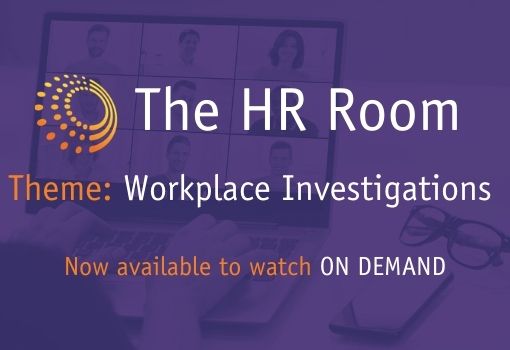In our last blog we discussed the reasons why you should consider bringing your workplace investigations online. It is understandable that you might have some initial reticence about doing so. After all, workplace investigations can be a minefield at the best of times, let alone in the middle of a crisis. However, with some careful preparation and adherence to process, you can run a remote investigation that will withstand external scrutiny.
There is a saying that goes ‘failing to prepare is preparing to fail’, and that never rings truer than when it comes to doing anything with technology. In this blog we will be looking at how you can make initial preparations for your remote workplace investigation, and what kind of technology you can use to make the process as smooth as possible.
Initial Preparations
A good starting point when considering conducting a remote workplace investigation is to outline clearly each of the steps you would take when conducting a traditional investigation. Perhaps you do not have a lot of experience, or it has been a long time since you completed one. Either way, it would be in your best interest to re-familiarise yourself with the process.
One of the very first items on your list should be to review the existing policy in place at your organisation. You are obliged to follow the procedure outlined, as it has already been established and agreed upon. If this policy mentions face to face meetings specifically, you may need to insert an addendum or an amendment to your existing policy in order to take account for conducting meetings remotely.
You should also provide all parties with the terms of reference that clearly outlines exactly what is being investigated and the scope of the investigation, and you will need to outline that the remote meeting is also expected to be confidential. That means that you need to prepare your employee in advance of how long the meeting is expected to take and that they will need to be in a private space throughout.
Setting a time and date for the interview is next, and all parties should be notified in writing. As this will be a remote meeting, you may need to offer your employee more flexibility than usual. Your employee may be dealing with children in the home and may not have access to a private space until a certain time of day. It therefore makes sense to ascertain their preferred time of day and week in advance of the meeting being set. Prior communication with them regarding their personal situation will help to make finalising a date much more efficient.
Usually parties are summoned to a dedicated private space, in the workplace or perhaps in an external venue if enlisting the help of a third-party HR consultant. When running a remote investigation, your meeting must take place online. In these cases, ensure that you have set up a dedicated meeting room that is password protected for security. Use an established and well-known provider that complies with privacy regulations (more in Part Two of this two-part series Link). If conducting multiple interviews, you should ensure that you are using unique links for each one, rather than setting up one meeting and just relying on people to only log on at the time requested. Alternatively, most providers will offer a ‘waiting room’, or a ‘knock to enter’ policy, so make sure you adjust this setting to minimise the risk of having any interviewees turning up announced. This link should be sent to attendees via email when arranging the interview, or steps on how to access the meeting should be clearly explained in the notification letter. Remember that if your attendee wishes to include a representative, that representative will also need to be provided the details.
Best practice in HR matters – if viable for your business – is to separate out the process, meaning that the person who conducts the interview should be different to the person who decides the outcome. That means that you should also ensure that your colleagues in the HR department are up to speed with the tech platforms needed to conduct the investigation – and that you provide access to training where necessary. You can even record a short video and screen share to show how to perform certain steps in the process and then send it around to each of your colleagues that will be involved.
Similarly, it would be in your best interest to send your employee directions on how they can access the meeting. Although many of us have become acquainted with online video conferencing tools of late, this should not be taken for granted. The last thing that you want is to be fully prepared for a meeting only for it not to go ahead because your employee was unaware that they would need a certain browser to access the link, for example. Sending your employee a brief video explainer will help minimise this possibility. It is also worth reminding them of video calling etiquette, for instance making sure that they are in a well-lit room and that they have informed those they live with that they should not be disturbed.
Using the right tools
Choosing the best platform to suit your needs may well seem challenging. There is a running joke about online meetings being frustrating. However, technology has come on in leaps and bounds since the first video conferencing software was rolled out. There are many different providers that offer all kinds of functionalities. You may opt to buy licences for an all-singing all-dancing platform that can be used in other areas of the business. Or, you may choose to have a separate tool. Either way, there are a few features that yours should have:
- The ability to invite multiple participants to the same meeting in case your employee opts for representation
- The ability to record the interview for transcription purposes
- The ability to make the meeting password protected and add a waiting room or knock to enter option
- The option to extend an interview past its scheduled time automatically
Zoom is one tool that has been recommended due to its ability to record high-quality video and audio, though you will need to purchase a subscription should you wish to use it, as the free version disconnects meetings automatically after 40 minutes. In order to access the full functionality of Zoom, your interviewee will need to download the app in order to be able to access the meeting. This can lead to delays, and your interviewee is within their rights to refuse to download the application. If they wish to access the meeting without downloading, then they will need to open a free account using an email address and password.
At Insight HR, we have been using Microsoft Teams as it suits all our needs currently. We can invite multiple participants to each meeting, record meetings, and there is a waiting room (or lobby). It also does not kick us out of the meeting once the calendar scheduled time has passed. Additionally, there have been some security issues identified with Zoom, though Zoom rolled out a version upgrade on the 27th April so these may now be addressed.
Having a backup Dictaphone or even normal phone recording in case the software fails is also advisable – though this should only be done from a work specific device for security purposes.
Whichever platform you decide to go with, it is strongly advised to trial the platform – and the recording – in advance. You may be well used to different video conferencing platforms. However, in a workplace investigation, the stakes are considerably higher. You really want to leave no room for error. Technology can fail at the most inopportune of times – and often does! So, testing the platforms beforehand is key.
We hope that this has given you some food for thought when it comes to preparing for your remote workplace investigation. There are two additional areas that you need to consider in order to run a smooth investigation. Find out what they are in the second part of this two-part series here!



